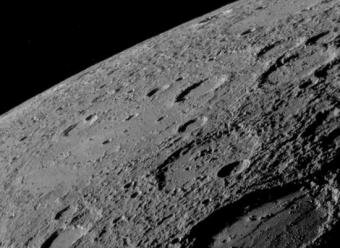This year’s first operational dive of Okeanos Explorer has come across the discovery of a new octopod. This is what the National Oceanic and...

The shade of the planet nearest to the Sun has long baffled scientists. The surface of Mercury seems extremely dark, but what is the reason behind it?
Researchers might have got an answer using the data from NASA's MESSENGER spacecraft that orbited Mercury from 2011 to 2015.
A latest analysis of the data has led into carbon identification, the form similar to the ‘lead’ present in a pencil, as the dark substance on the surface of the planet. In a paper that appeared in the journal Nature Geoscience on Monday, scientists said that this may suggest that the original crust of Mercury was composed of graphite.
In an interview with The Christian Science Monitor, study lead author, Patrick N. Peplowski, said that according to them what they have seen are the leftovers of the planet’s original crust, formed 4.6 billion years back. Peplowski, who examines MESSENGER data at the Johns Hopkins University Applied Physics Laboratory, said that that ancient carbon-rich crust even today darkens Mercury.
As a theoretical explanation, researchers had already proposed that carbon merged into the planet’s crustal rocks. Dr. Peplowski explained, “When you think of charcoal or you think of pencil lead, it's really dark. So if there was little bit of carbon mixed in with these materials, then that could easily account for albedo or the amount of light reflected from surface”.
However, a very little amount of carbon is present in crust of the moon, Earth or other planets. He mentioned that thus, in case carbon was Mercury’s darkening agent, there must be a whole lot more than what they have ever noticed in the crustal materials on another planet.
And apparently there was, thus, in that case how the crust of Mercury got such a unique composition? According to Peplowski and his colleagues, all this kicked off early in the formation of our solar system.










